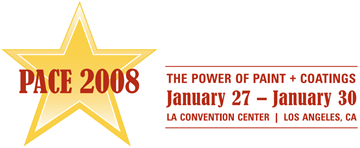Search
SSPC Conference Papers
Legacy SSPC Conference Papers
View as
Sort by
Display
per page
Assuring Quality with Certified Coating Contractors, Applicators, and Inspectors
Product Number:
51219-187-SG
Publication Date:
2019
$20.00
Atmospheric Plasma Coating Removal: The Future Without Spent Abrasive
Product Number:
51218-099-SG
Publication Date:
2018
$20.00
Avoiding Problems With Coating Wood: A Review Of Substrate Condition And Preparation, Moisture Issues And Coating Selection
Product Number:
41207-338-SG
Publication Date:
2007
$20.00
Back To The Future: 19th Century Coatings Provide 21st Century Value
Product Number:
41210-536-SG
Publication Date:
2010
$20.00
Balancing Act: Principles of Design and Formulation for Waterborne Acrylic DTM Coatings
Product Number:
51217-077-SG
Publication Date:
2017
$20.00
Ballast Tank Coating Inspection by Imaging Fluorescent Coatings
Product Number:
41205-169-SG
Publication Date:
2005
$20.00
Basics of Corrosion in Reinforced Concrete
Product Number:
41215-897-SG
Publication Date:
2015
$20.00
Beating the Odds for Successful Concrete Flooring Installations
Product Number:
41216-970-SG
Publication Date:
2016
$20.00
Bedeviled Bridges: An Answer to a National Scandal
Product Number:
51217-062-SG
Publication Date:
2017
$20.00
Benefits Exhibited by Styrene Free Coating Technology
Product Number:
41216-961-SG
Publication Date:
2016
$20.00
Benefits of Micaceous Iron Oxide, Aluminum Flake and Glass Flake Filled High Performance Coatings
Product Number:
41207-315-SG
Publication Date:
2007
$20.00
Benefits of Using Both SSPC & PDCA Standards in Project Specifications
Product Number:
41208-441-SG
Publication Date:
2008
$20.00












